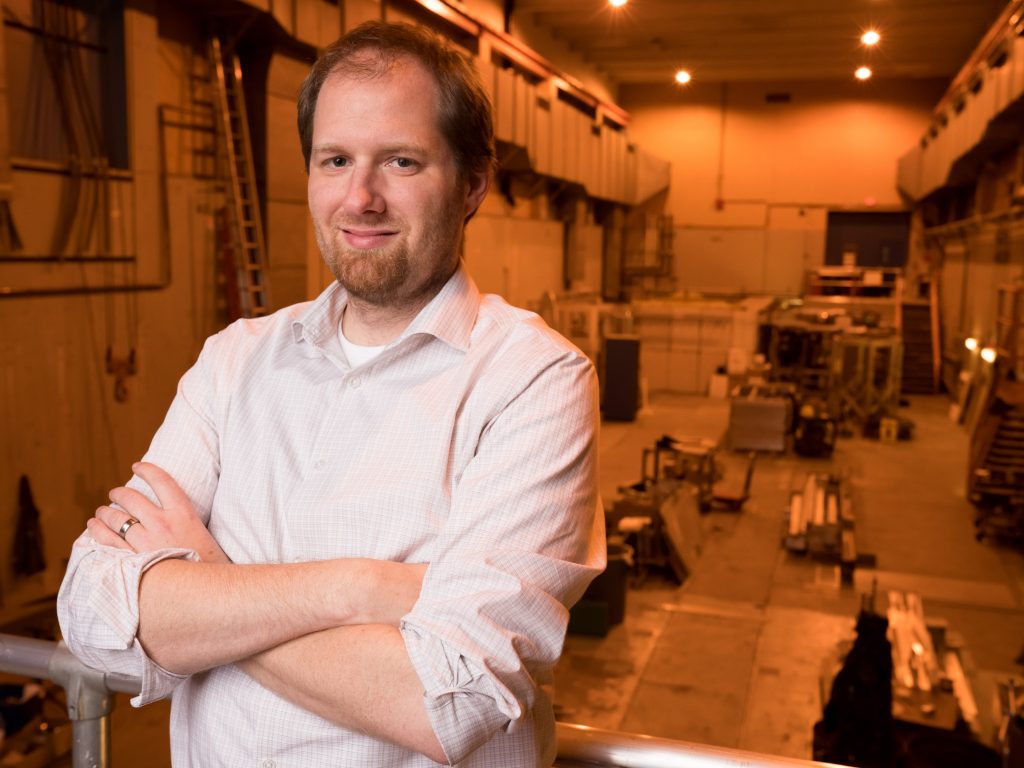As the global community continues to grapple with the coronavirus (COVID-19), the Atlantic Council is open for business. Our business, meetings, and events, however, are occurring virtually. For more information, please read an update from our President and CEO.
Event recap
On September 30, 2020, the Atlantic Council Global Energy Center hosted Bob Mumgaard, chief executive officer of Commonwealth Fusion Systems (CFS), as part of EnergySource Innovation Stream, an online series that highlights new energy technologies with the potential to reshape the global energy system. Mumgaard discussed fusion energy technology innovations and how his company’s advanced magnet fusion reactor could accelerate the commercialization of fusion energy. Randolph Bell, Richard Morningstar chair for global energy security and director of the Atlantic Council Global Energy Center, provided introductory remarks and moderated the discussion.
Mumgaard began his presentation by explaining the process for generating fusion energy and the current scale of the technology. In simple terms, a fusion reaction combines two lighter elements into a heavier element, and fusion technologies today combine two hydrogen isotopes to form helium. Molecular fusion is highly energy efficient, generating 200 million times more heat output per pound of input in comparison to burning fossil fuels. A fusion reactor is typically built with accessible metals like lithium, deuterium, and tritium, and extracts hydrogen from water. He noted the importance of the international scientific community in steadily increasing the public’s understanding of fusion technology. Mumgaard explained that there are countless fusion technology designs out there with varying scientific, engineering, and marketing risks. Research institutions and private companies must decide how to balance their technical confidence in the system with the economic feasibility of a project. Government funding efforts have focused primarily on the traditional and more expensive tokamak fusion model, which resembles a donut of plasma. On the other side, startups have elected to take on higher development risks in order to focus on building commercially viable reactors. Mumgaard asserted that fusion technology is “right below [a] breakeven point of generating the excess energy that you can then harness to drive commercial processes.”
According to Mumgaard, Commonwealth Fusion Systems (CFS) is developing and will build the first fusion energy project that will generate more power than it consumes. In partnership with Massachusetts Institute of Technology, the company is developing a strong superconducting magnet whose magnetic fields allow a fusion reaction to occur in a relatively smaller space. CFS will construct the final magnet next summer and then begin work on SPARC, a compact fusion reactor that will produce 50-150 megawatts of heat to power an electric turbine. CFS plans to commercialize a scalable fusion energy system by the 2030s. Mumgaard noted that the company is combining the flexibility of a startup with the science of big government programs. According to peer-reviewed scientific publications that evaluated the CFS project, the machine could generate ten times as much power as it requires to runs.
Audience questions focused on the implementation, technology, policy, and geopolitical challenges facing fusion energy. From a fuel standpoint, Mumgaard relayed that fusion is potentially disruptive because it has relies on a relatively secure and smaller supply chain compared to oil and gas, and does not use uranium or plutonium. In order to build a fusion reactor, developers must have access to technologies like thin film deposition to make superconductors, as well as advanced manufacturing to produce metal parts.
Mumgaard pointed out that fusion technology breaks with many of the traditional models of energy geopolitics, as control of the knowledge-based technology, rather than the primary materials required, determines market winners and losers. He stated that “at the end of the day, this is not really about who controls the atoms, it is really about who controls the knowledge.” From a policy perspective, Mumgaard explained that the role of government and regulators should be to establish a market framework for the infant fusion industry. The US House of Representatives passed a Comprehensive Energy Bill on September 24. 2020 that included fusion technology for the first time. Mumgaard recommended potential policy measures like sharing costs to jumpstart technologies; supporting the research and development pipeline; and creating regulatory and export structures that are fast-paced, flexible, and innovation-focused. In concluding, Mumgaard underscored the importance of cooperation among market players and highlighted the role of competitive, low-cost, and scalable solutions in generating potential external benefits like energy independence, access, reliability, and decarbonization.
Featuring

Bob Mumgaard, chief executive officer of Commonwealth Fusion Systems (CFS)
As CEO of Commonwealth Fusion Systems (CFS), Bob leads the strategic vision for the company. He received his PhD in plasma physics at MIT, focusing his work on Alcator C-Mod and developing techniques to measure the magnetic field inside tokamak plasmas. During this time, Bob contributed to the design of several small tokamaks using high temperature superconductors (HTS). As an MIT fellow, Bob focused on how entrepreneurship, risk-retirement strategies, and partnerships could increase the speed of fusion from laboratory to market. His work has focused on strategies to leverage the collaboration of private finance and traditional academic resources to speed the path to commercial fusion energy.
Related experts
Learn more about the Global Energy Center

The Global Energy Center develops and promotes pragmatic and nonpartisan policy solutions designed to advance global energy security, enhance economic opportunity, and accelerate pathways to net-zero emissions.


